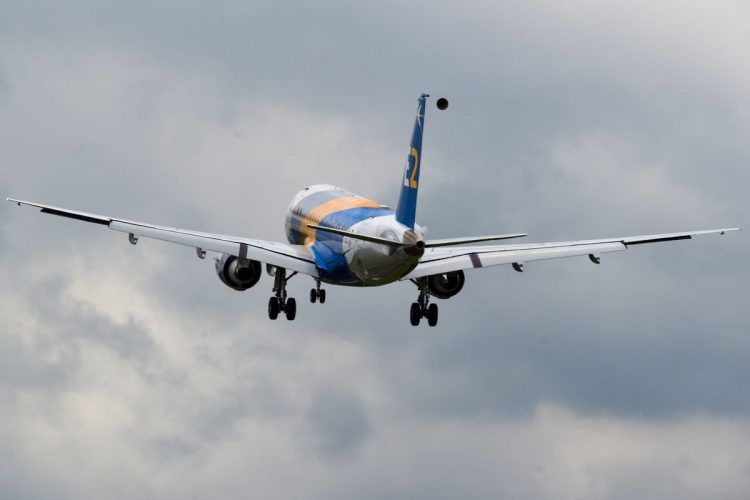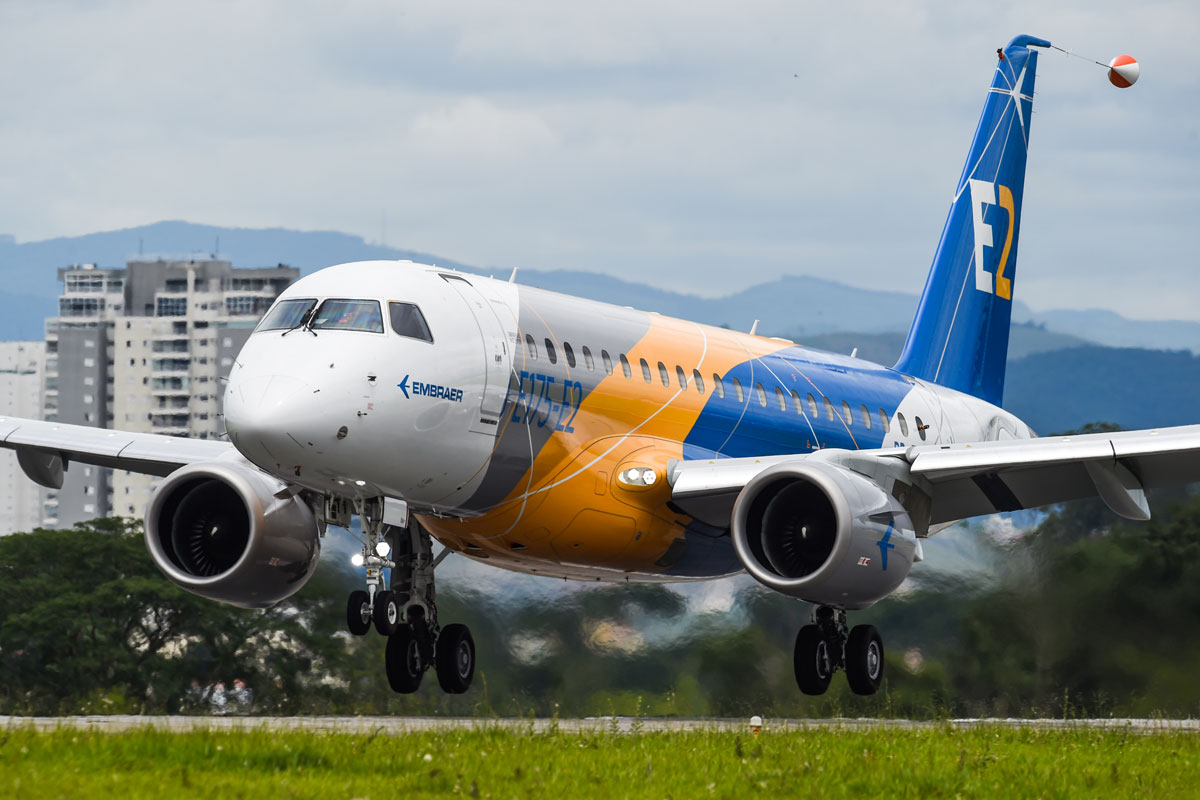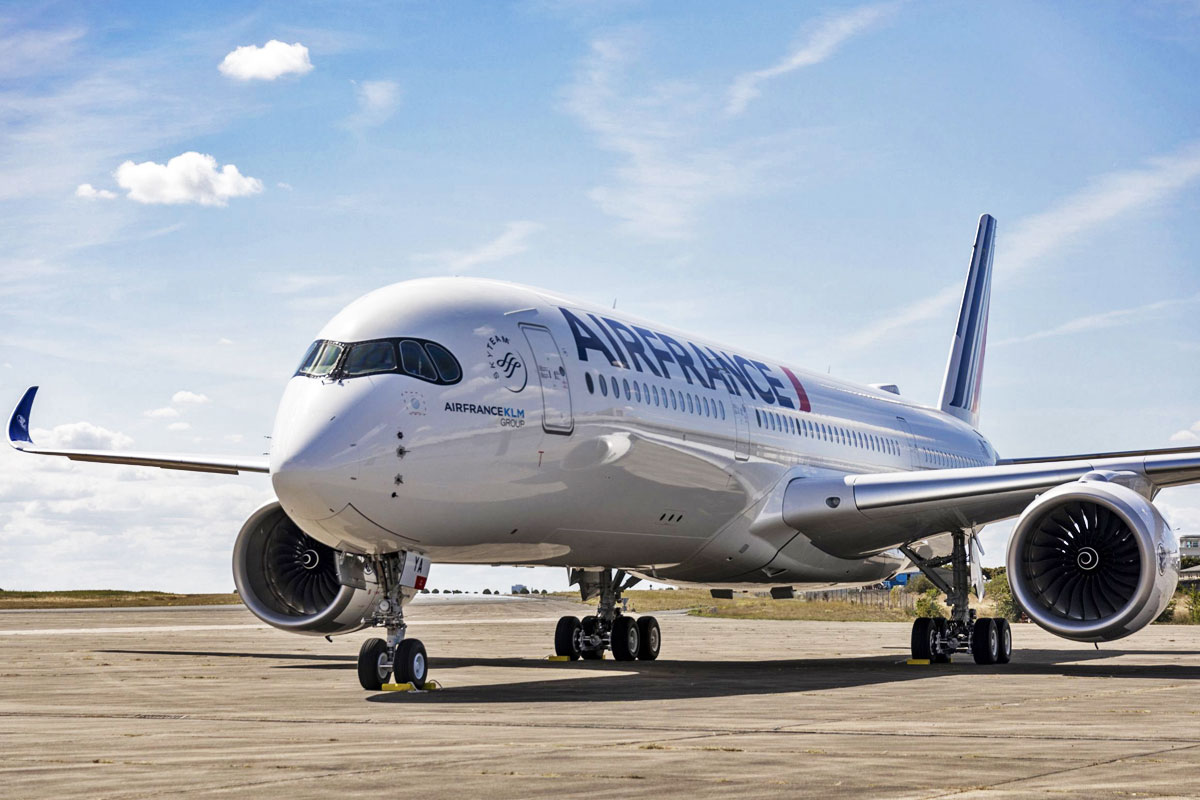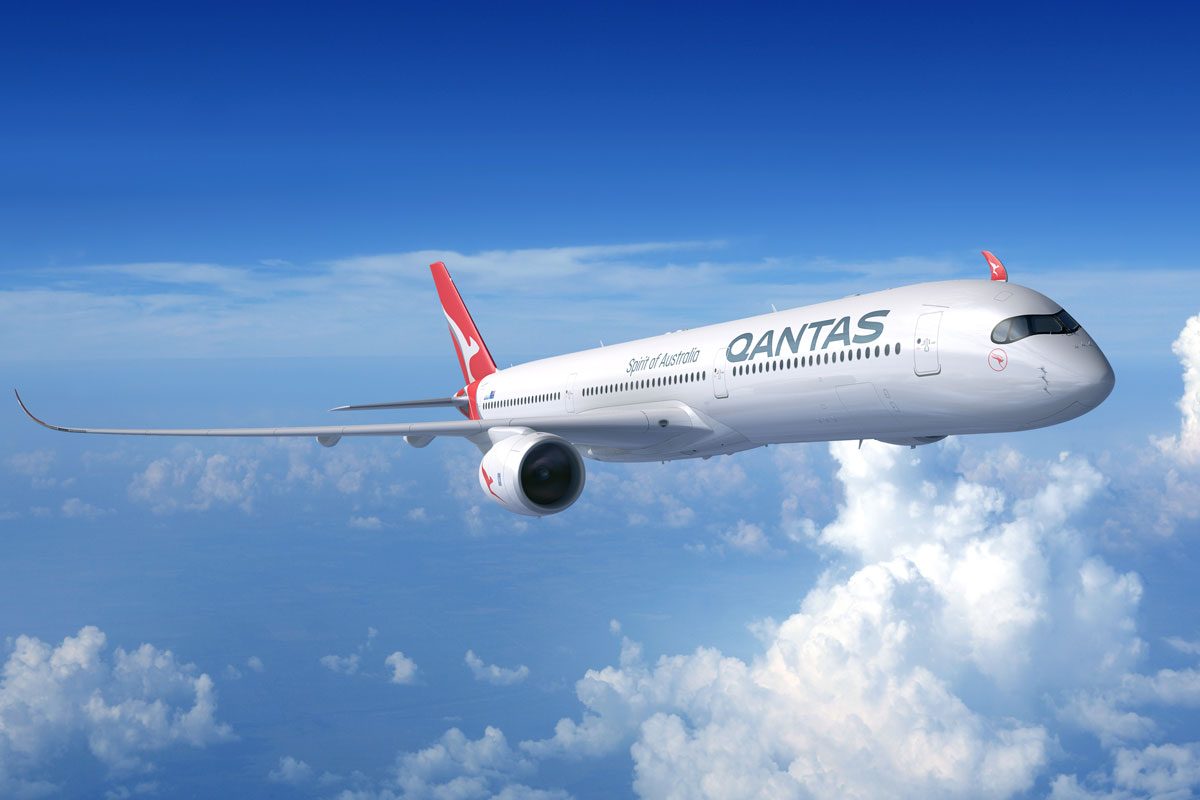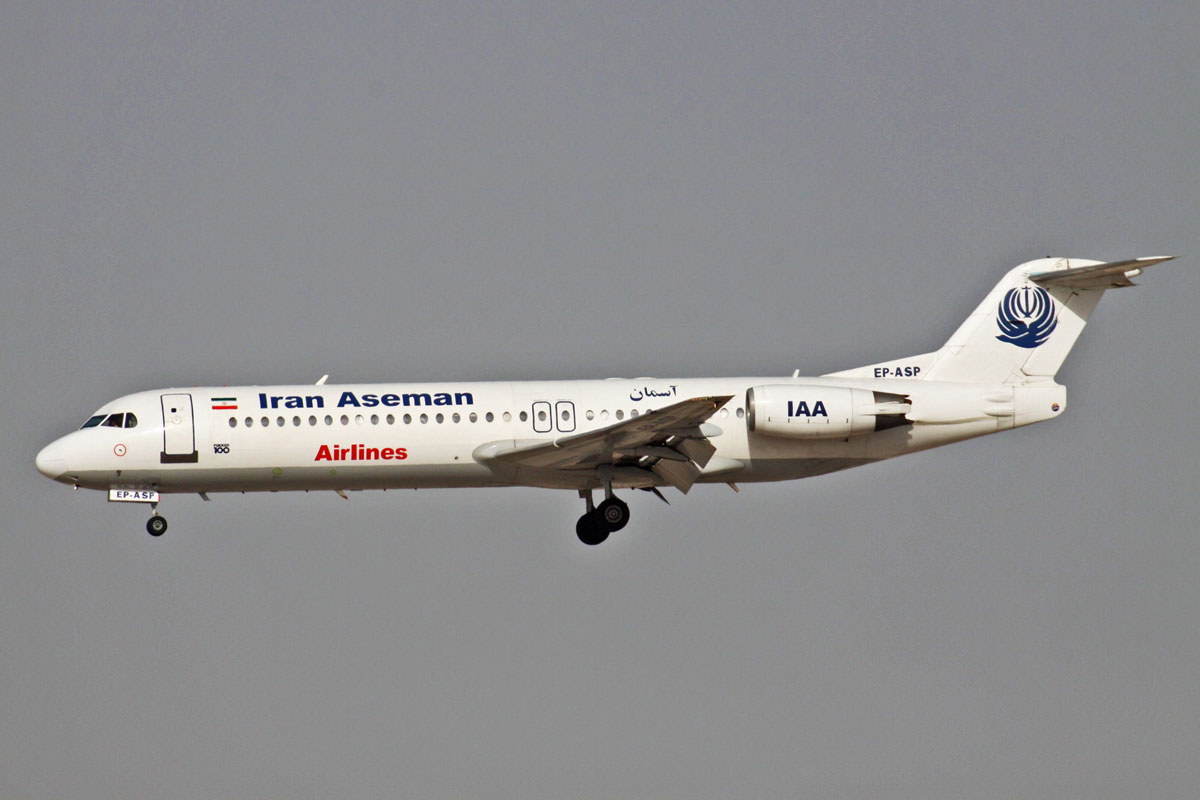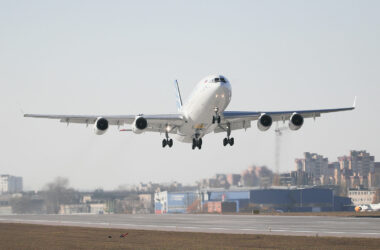If the flight took place decades ago, the E175-E2‘s fuselage would draw attention by not displaying any airline logo. Today, however, the customer names of a new aircraft are no longer displayed, which in the case of the Embraer jet would mean some embarrassment.
In its official presentation followed by its maiden flight on Thursday, the smallest jet of the new E2 family breaks a tradition of the Brazilian manufacturer of always having buyers for its aircraft before the first flight. But the E175-E2 took off for the first time and flew for 2 hours and 18 minutes loaded with many uncertainties.
With a two-year flight testing campaign, the aircraft has plenty of time to reach its first customers. Good reasons abound after all, the jet is more efficient than its predecessor, the successful E175, and carries more passengers farther away.
Thanks to the increased fuselage, the jet can accommodate one more row of seats. It can carry 80 passengers in two classes or 90 in a single class. According to Embraer, the E175-E2 consumes 16% less fuel and has 25% lower seat maintenance costs than the E175-E1. And like its larger “brothers”, it has 10,000 flight hours maintenance intervals, allowing it to fly another 15 days in a 10-year period.
Unlike the E190-E2 and E195-E2, the new commercial jet uses a smaller variant of Pratt & Whitney’s ultra-high pass engine, the PW1700G with a smaller diameter than the PW1900G. But like them, it’s also equipped with a brand new, uniquely designed wing, plus full fly-by-wire controls.
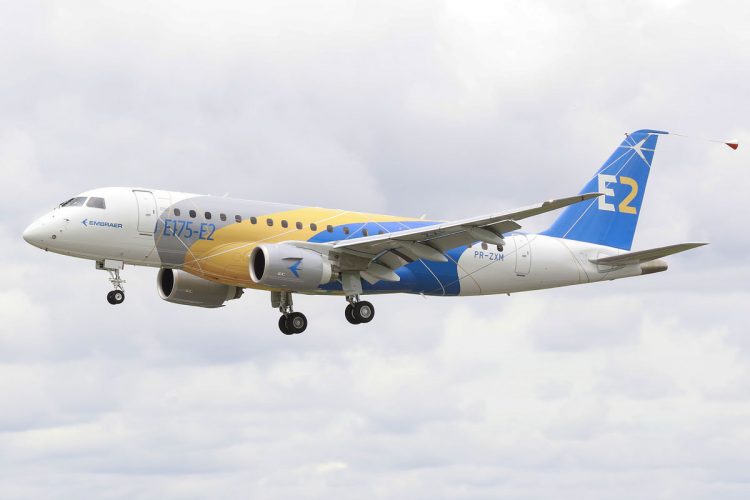
Waiting for change
Despite impressive technical data, the E2 family faces difficulties in the aviation market. These include the good sales performance of Bombardier’s former C-Series Airbus A220, which has won several customers, and the arrival of new competitors such as Mitsubishi’s Japanese SpaceJet.
Another possible reason to undermine the commercial career of the new jets is the imminent joint venture with Boeing, which has taken over 80% of Embraer’s commercial division but whose start-up is not yet clear – although expected by early 2020 if approved by the authorities of the various countries involved.
In the case of the E175-E2, the situation is more critical. Embraer believes in relaxing the scope clause established by the US pilot unions, which today prevents the jet from flying in regionals airlines. But so far negotiations with the major airlines have not come even close to changing these limits, with a maximum takeoff weight of 86,000 pounds and passenger capacity of 76 seats.
As a result, the first orders for the E175-E2 ended up in suspense and left the jet without a single customer to witness the first flight this December 12th.
